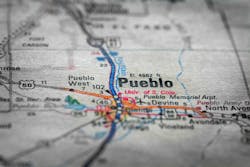In many cities the fire department is becoming a key part of the provider community by helping citizens navigate the healthcare system and social services. In Southeast Colorado, a care coordination platform is supporting a program led by the Pueblo Fire Department to reduce unnecessary use of hospital emergency rooms.
The program, called Directing Others to Services (DOTS), is funded by Parkview Medical Center but led by the Pueblo Fire Department.
Kelea Nardini, assistant vice president for quality and post-acute care at Parkview, described the program’s origins. She said several years ago, Parkview and community providers, including the fire department, got together to work on better communications and transitions.
“We realized that we were all reaching out to the same people and wondered if we were duplicating services or if there were ways to streamline things,” Nardini said. In October 2015 they created a community-based care transition program for Southeast Colorado that enables patient self-management, care coordination including transfer of information to all providers, and 30-day post-discharge care and support.
“We chose one intervention to work on, and we decided to tackle the fire department delivering other to service (DOTS),” she said, “and help them figure out how to roll that up into one database for all to access.”
Barb Huber, Pueblo’s fire chief, said that as the consortium got started, it was about getting people the resources they needed and the right kind of care. “We were looking for less 911 usage and less ER usage, but I think the heart of what everyone was looking for was getting people the healthcare they needed, so they weren’t overwhelmed and could manage their own lives.”
In early 2018, Parkview Medical Center made the decision to purchase a care coordination platform called Connect from a Dallas company called Pieces. Parkview also bought Pieces’ tool called Predict, which uses algorithms to help identify patients who may have challenges upon discharge.
The Predict platform is used on the inpatient side by running natural language processing models and artificial intelligence on the data coming out of the Meditech EHR, explained Lehanne Doyle, vice president of client success at Pieces. That data is fed back to the management team so they are made aware of discharge barriers, including social determinants of health and other clinical barriers so the case management team can work to make sure they address those items before the patient leaves.
The organizations say that Pieces Connect helps to streamline referrals and communications from the health system and from the fire department to each other and other community organizations. The Pieces directory of community organizations and contacts is updated regularly. Those process improvements were critical to taking the program to the next level and reaching more community members, the consortium members said.
“We can see the fire department has closed the loop with the patients that we have referred to them,” said Nardini. For instance, the public community health center is part of our network. We can see if a referred patient went to their doctor’s appointment there.”
Kelly Firestone, the fire department’s community risk reduction coordinator who deals directly with DOTS clients, says she gets referrals through the Connect system.
“I can look them up in our system and see if we have experience with them. I go out to the house and knock on the door and ask them if they would like help connecting to resources in the community, and we start a conversation about their needs, their barriers,” she said. “We help them network to get the resources they need. A lot of the times, when someone is calling 911 or going to the emergency room, they are searching for help but not going to the right place. We educate them on how the ER is not the right place. We help them get connected. We do not just hand them phone numbers or brochures. We actually help them navigate through getting set up with those resources, including helping them get set up with primary care. Another big thing is transportation to those appointments and keeping track of the appointments and helping them actually get there.”
Parkview and the fire department are tracking the results and are pleased with the outcome so far. Nardini noted that 58 percent of patients had decrease in ED utilizations after being enrolled in the program.
Huber said across the nation other fire departments have developed similar programs referred to as CARES, which stands for Community Assistance Referrals and Education Services. “The Colorado Springs fire department helped us put ours together,” she said. “More fire departments are taking that proactive approach of being a part of the community.”


